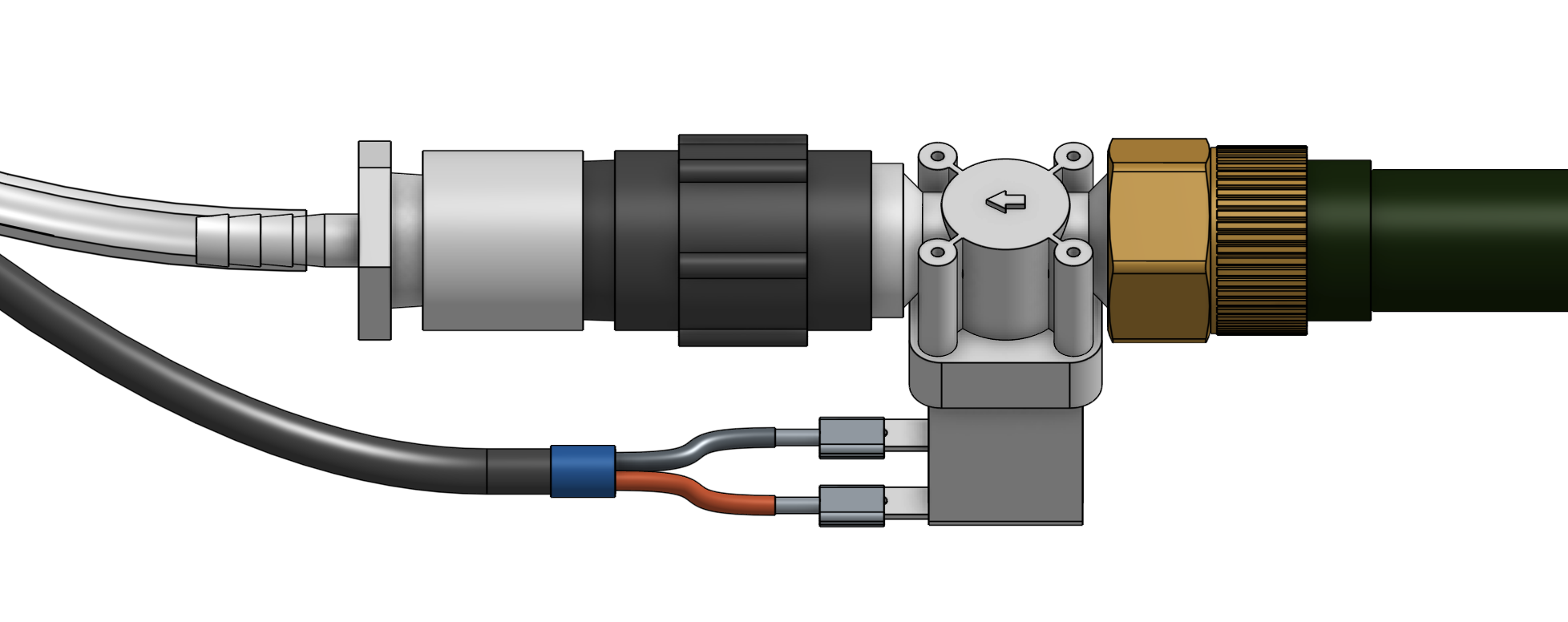Watering Nozzle
Documentation and assembly instructions for the FarmBot Genesis watering nozzle
The watering nozzle accepts a concentrated stream of water coming from the UTM and turns it into a gentle shower for your plants.
25 minutes
This is the estimated time it will take to assemble the Watering Nozzle
Step 1: Gather the parts and tools
Gather all the watering nozzle parts from the table below and lay them out in a logical manner. To complete the assembly, you will also need the following tools:
| Qty. | Component |
|---|---|
| 1 | Watering Nozzle Bottom |
| 1 | Watering Nozzle Top |
| 2 | M3 x 10mm Screws |
| 2 | M3 Locknuts |
| 3 | M5 x 30mm Screws |
| 3 | M5 Washers |
| 3 | M5 Locknuts |
| 3 | Ring Magnets |
| 1 | Jumper Link |
| 1 | Pressure Regulator |
| 1 | Garden Hose (not supplied with FarmBot kits) |
| 1 | Garden Hose Adapter |
| 1 | Solenoid Valve |
| 1 | Barbed Adapter |
| 1 | Coupler |
Step 2: Assemble the watering nozzle
Press the watering nozzle bottom into the watering nozzle top. The two pieces only fit together in one orientation.
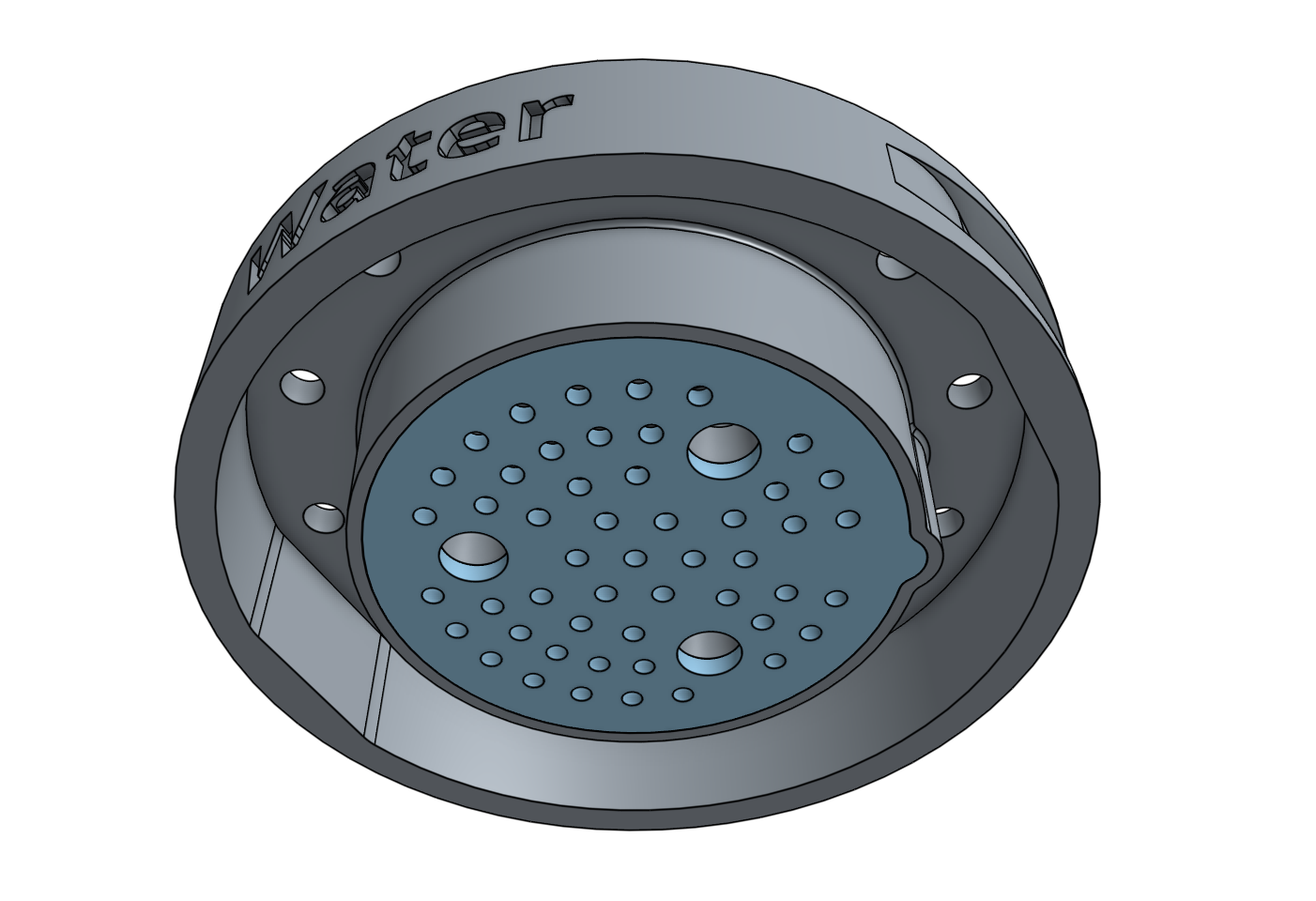
Step 3: Install the basic tool hardware
Install the magnets and tool verification jumper link using M5 x 30mm screws and M3 x 10mm screws and the instructions in the basic tool hardware reference guide. The M5 screws will secure the watering nozzle bottom and the watering nozzle top together.
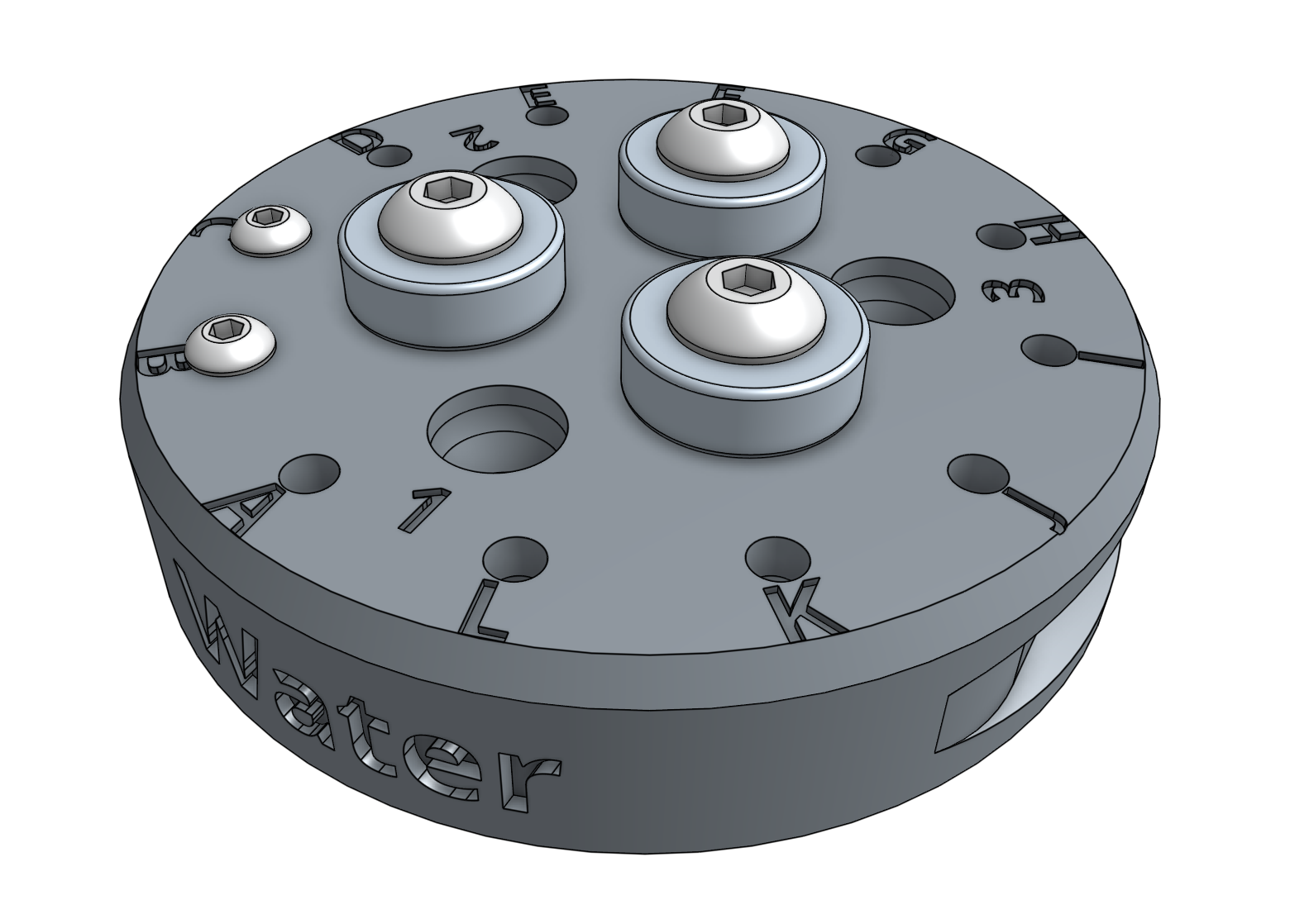

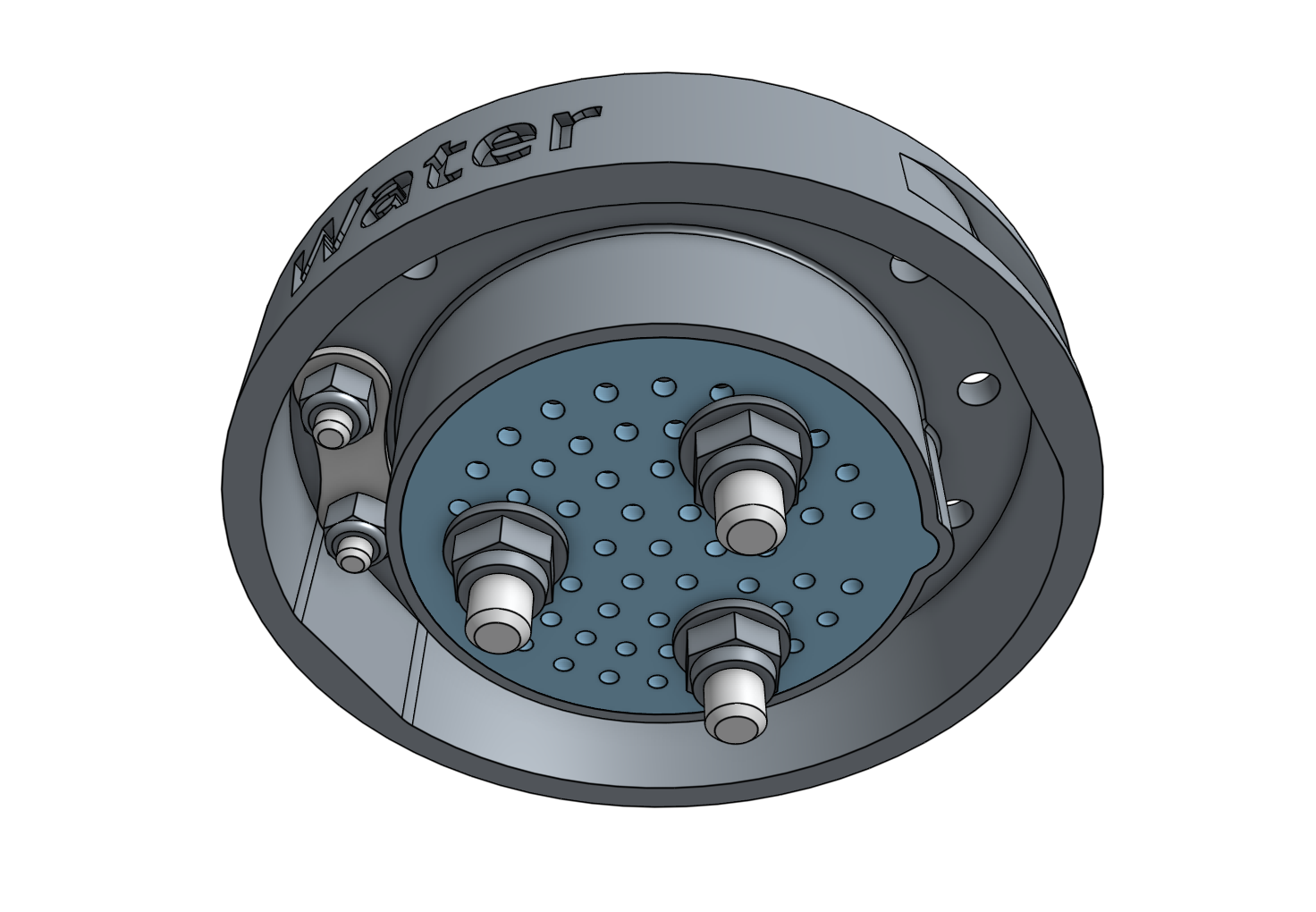
Step 4: Connect FarmBot to the water source
Screw the garden hose adapter onto the garden hose. Note that you will need to provide a garden hose of the appropriate length to connect FarmBot to your municipal water source - one is not provided with the FarmBot kits.
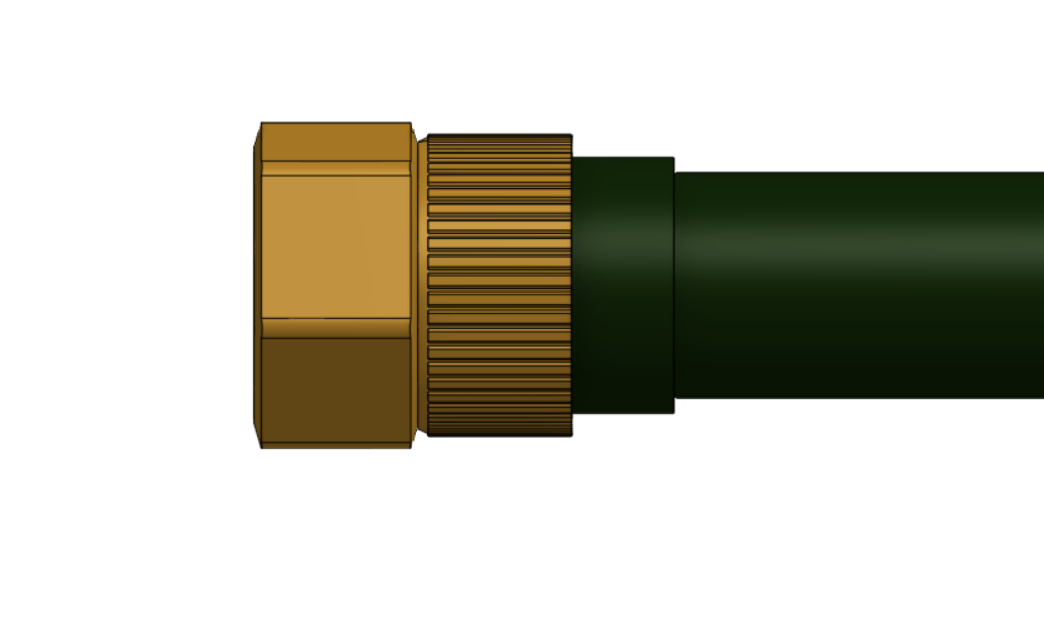
Screw the solenoid valve inlet into the garden hose adapter. Use PTFE tape to seal the threads according to the reference guide.
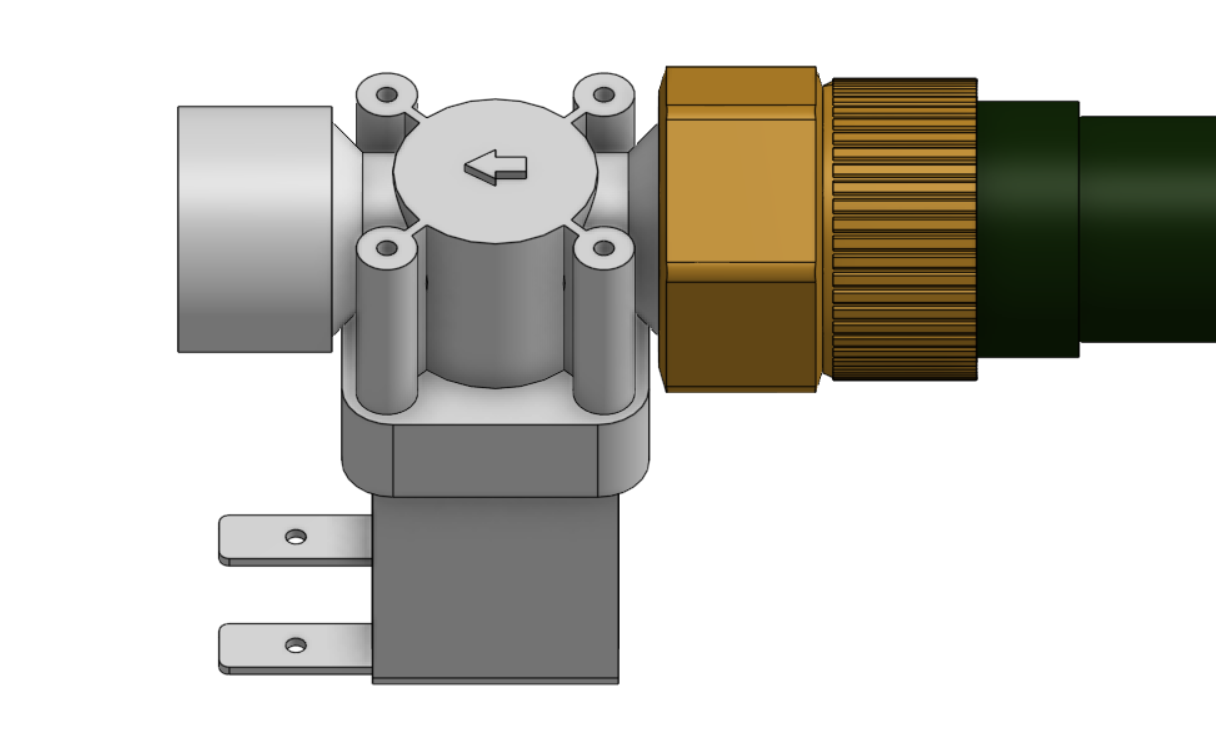
Screw the pressure regulator onto the solenoid valve outlet. Use PTFE tape to seal the threads according to the reference guide.
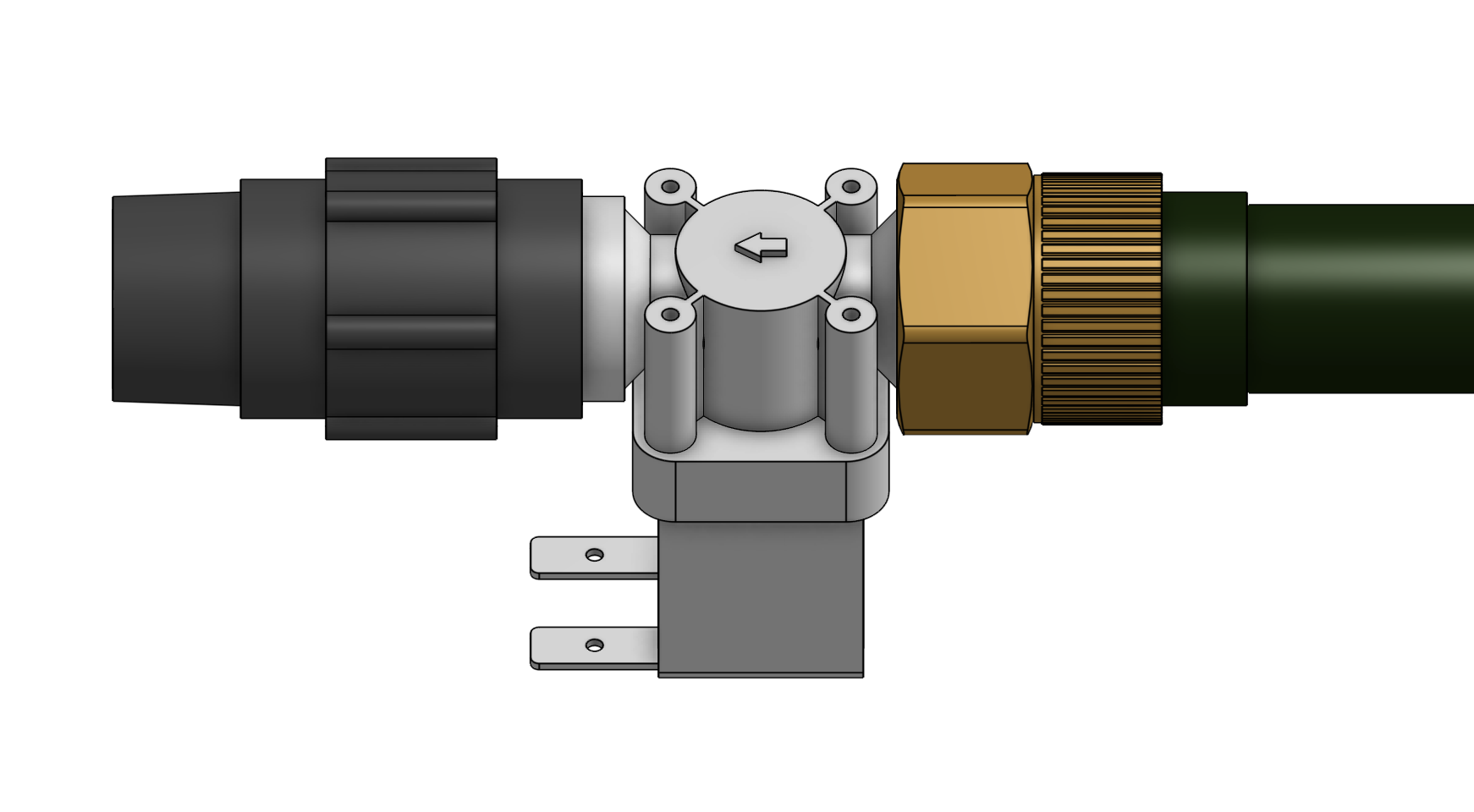
Screw the coupler onto the pressure regulator. Use PTFE tape to seal the threads according to the reference guide.
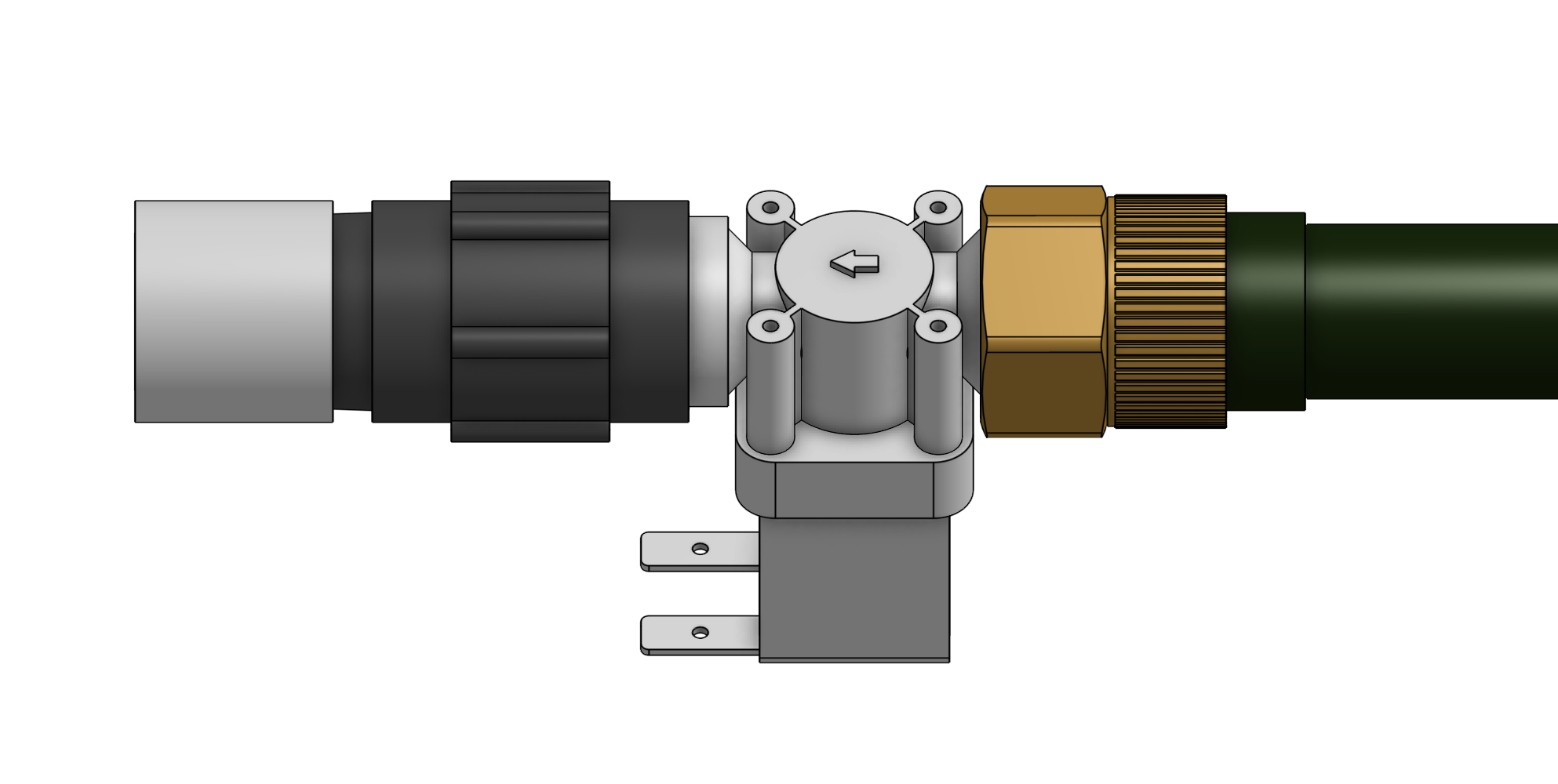
Screw the barbed adapter into the coupler. Use PTFE tape to seal the threads according to the reference guide.
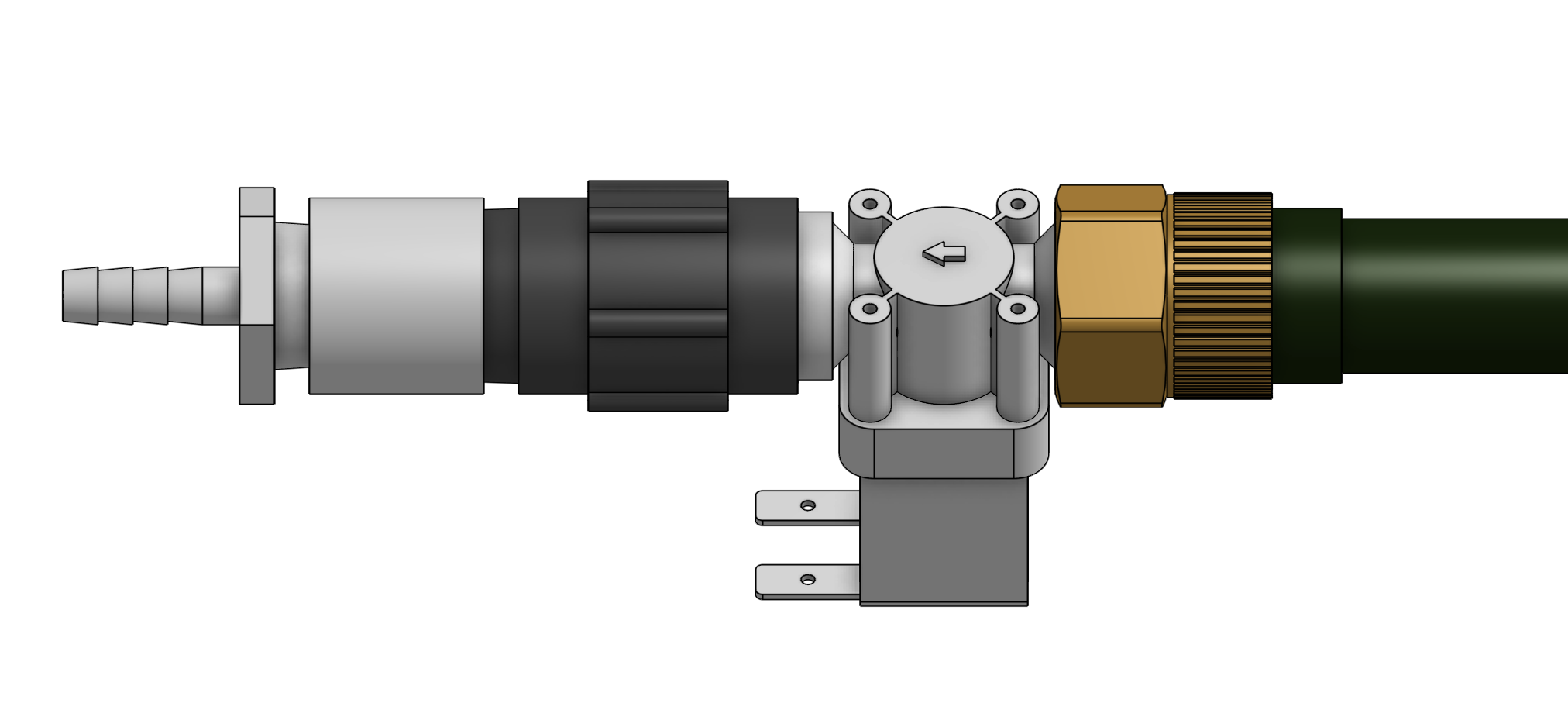
Push the water tube onto the barbed adapter and secure it with a zip tie.
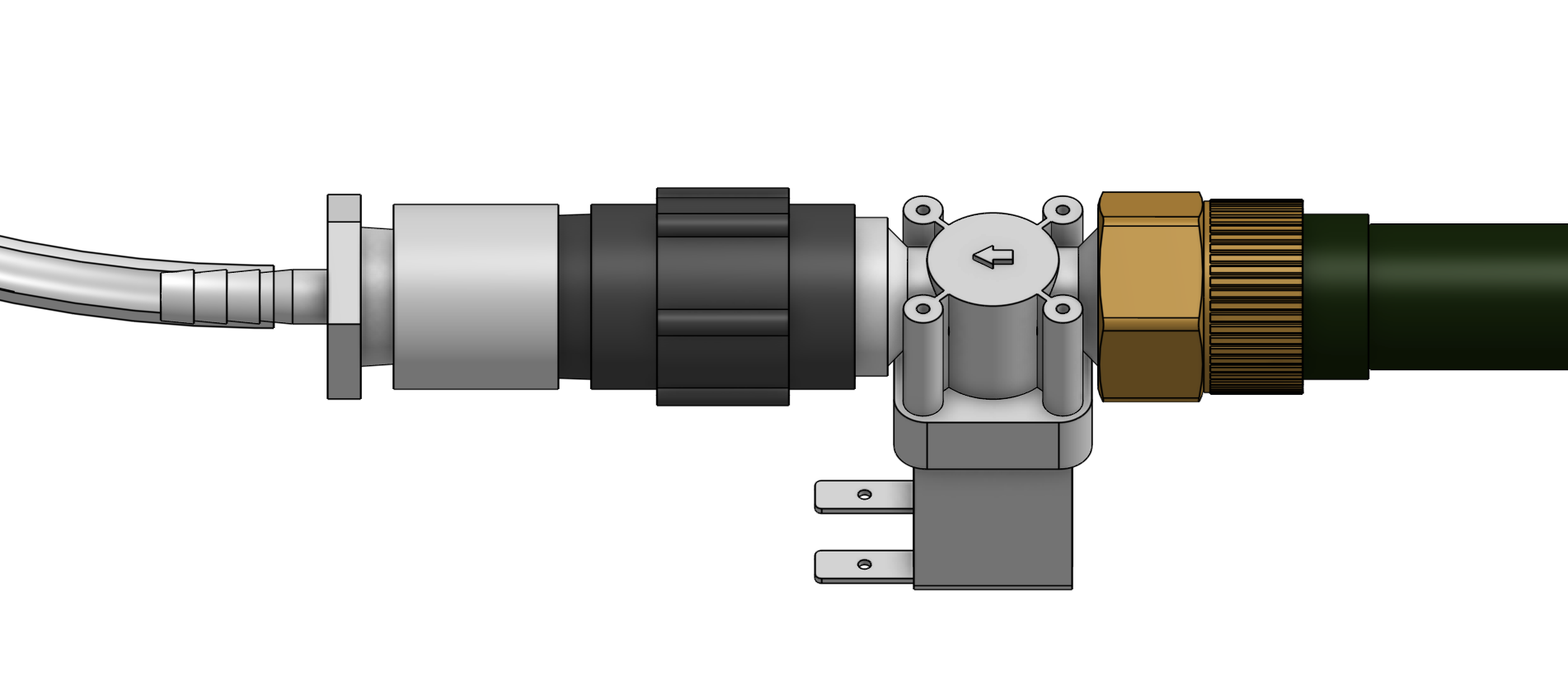
Step 5: Wire up the solenoid valve
Connect the solenoid valve cable to the solenoid valve’s terminals.
